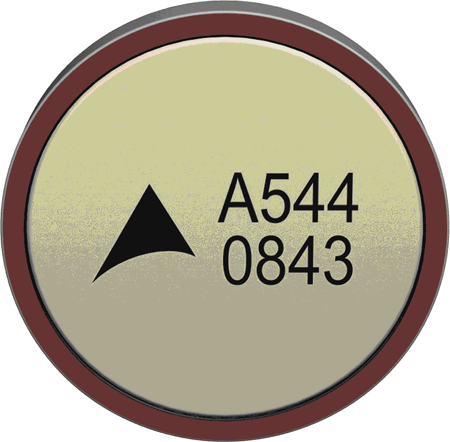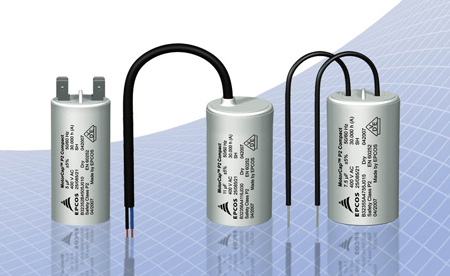Author:
Ronald Haenssler, Product Marketing Manager, AC Film Capacitors and Dr. Stefan Benkhof, Product Marketing Manager, PTC Thermistors
Date
04/01/2010
Anyone who replaces a refrigerator-freezer combination from the year 1990 with an upgrade appliance of energy efficiency class A++ will save about 80 euros per year for a 270-liter model, according to the German energy agency (dena). But before a refrigerator can join this premium class in terms of energy efficiency, its compressor must convert as much electrical energy as possible into cooling the icebox. The EPCOS capacitors of the MotorCap P2 Compact series contribute to this process while at the same time reducing the power consumption of the refrigerator - just like the motor-start PTC thermistors. Refrigerators are among the few home appliances whose energy consumption cannot be reduced by switching to standby mode: they work around the clock. So it's even more important that they convert the energy they consume extremely efficiently into cooling performance. The greater the energy efficiency rating (EER), i.e. the ratio of the electrical power input to the cooling output, the more efficient is the energy conversion process. Electrical energy is used to cool the refrigerator by means of a hermetically sealed mechanical compressor driven by an asynchronous motor. This contains a main winding as well as an auxiliary winding used to start the motor (Fig. 1). It is connected via a PTC thermistor. This ceramic-based (barium titanate) component has a strongly nonlinear resistance curve that jumps suddenly from a critical ceramic temperature. This allows it to be used as a switching delay element. PTC thermistors in this application are also known as motor-start PTCs.
The lower the ceramic temperature, the better the electrical conductivity of the thermistor. If the temperature of a ceramic PTC thermistor rises - due to resistive heating in this application - its electrical resistance increases. As soon as the compressor starts, the thermistor reaches its stationary (high-resistance) operating state due to resistive self-heating. The power loss resulting from the applied operating voltage and the internal resistance of the thermistor can be reduced in order to increase the energy efficiency. Because electrical losses are emitted as heat to the surroundings, the emitted power loss can be reduced by increasing the thermal resistance of the thermistor to its surroundings, for instance by reducing its disk diameter from 19.5 to 16 mm. The surface temperature, and thus the power loss in a stationary operating condition, can also be reduced by increasing the slope of its R/T curve (Fig. 2).
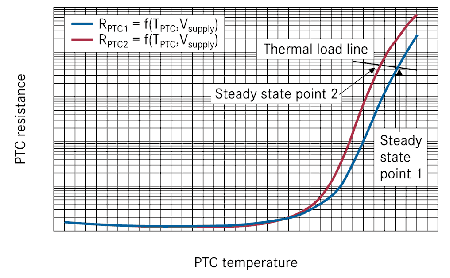
The power consumed by the motor-start PTC is calculated from the quotient of the difference of the PTC temperature to the ambient temperature and the total thermal resistance of the PTC element to its surroundings. In the case of a 22-? motor-start PTC disk with a reference temperature of 135° C and a nominal thickness of 2.5 mm incorporated in a motor-start package with a total thermal resistance of 85 K/W, the following energy was consumed annually: 6.92 kWh with a disk diameter of 19.5 mm (standard ceramic), 5.91 kWh with a disk diameter of 16 mm (standard ceramic) as well as 5.5 kWh with a disk diameter of 16 mm and the use of an optimized ceramic material with reduced power loss. The smaller ceramic volume and the new PTC ceramic enable energy savings of 14.6 and 20.5 percent respectively. In addition, the reset times in which the PTC element returns to a low resistance state and releases the auxiliary winding of the asynchronous motor for the next turn-on process are reduced from 67 to 61 or 58 s, respectively, for standard and optimized ceramic materials.
As the auxiliary winding is used only to start the motor, it returns to a passive state during operation. However, it can be converted into an active part of the motor by connecting it to a motor capacitor in series: a suitable MotorCap P2 Compact allows continuous operation. This increases the torque and the motor runs more efficiently, while providing the same output (Fig. 3). Measurement of five series-manufactured refrigerators with an average power requirement for cooling of 653.4 kJ yielded the following average power consumption figures:
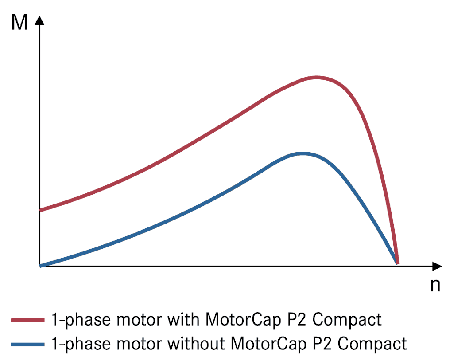
Another advantage of using motor capacitors is the lower compressor temperature. This not only means lower heat losses into the surroundings but it also increases the operating life of the compressor. Measurements of the five refrigerators showed that the use of MotorCaps reduced the external temperature of the compressor by 6.6 percent from 77.5 to 72.4 °C, and that of the copper winding by as much as 9.2 percent from 92.5 to 84 °C.
However, in addition to a lower compressor temperature, these capacitors offer further technical advantages. In contrast to some conventional models, MotorCaps are available in dry versions and thus contain no oil that could leak out if the capacitor were damaged. The MotorCap models, referred to a specification of 4 μF/400 V, also differ from conventional aluminum can capacitors in their construction. Whereas the latter have a diameter of 30 mm and a height of 90 mm with their cap, MotorCaps of the same diameter have a height of 63 mm and a 30 percent lower volume. Grounding is unnecessary thanks to their electrically insulated plastic cases. In addition, these capacitors can be mounted permanently and with no performance loss in any desired position. Particularly fast and simple assembly is permitted by the optional locking clip: it means there is no need for a washer to tighten the nut (Fig. 4).
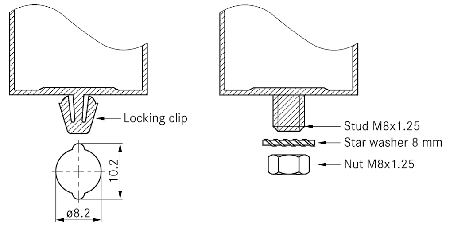
In addition to international approvals such as UL and CQC, the MotorCap P2 Compact motor capacitors are classified to the VDE/IC standard 60252-1 2001 with an operating life of 30,000 h (Class A) as well as Safety Class P2. Apart from the new motor-start PTCs and motor capacitors, EPCOS offers other components such as NTC thermistors for temperature measurement and regulation. They also contribute to improving the energy efficiency of refrigerators and freezers.
